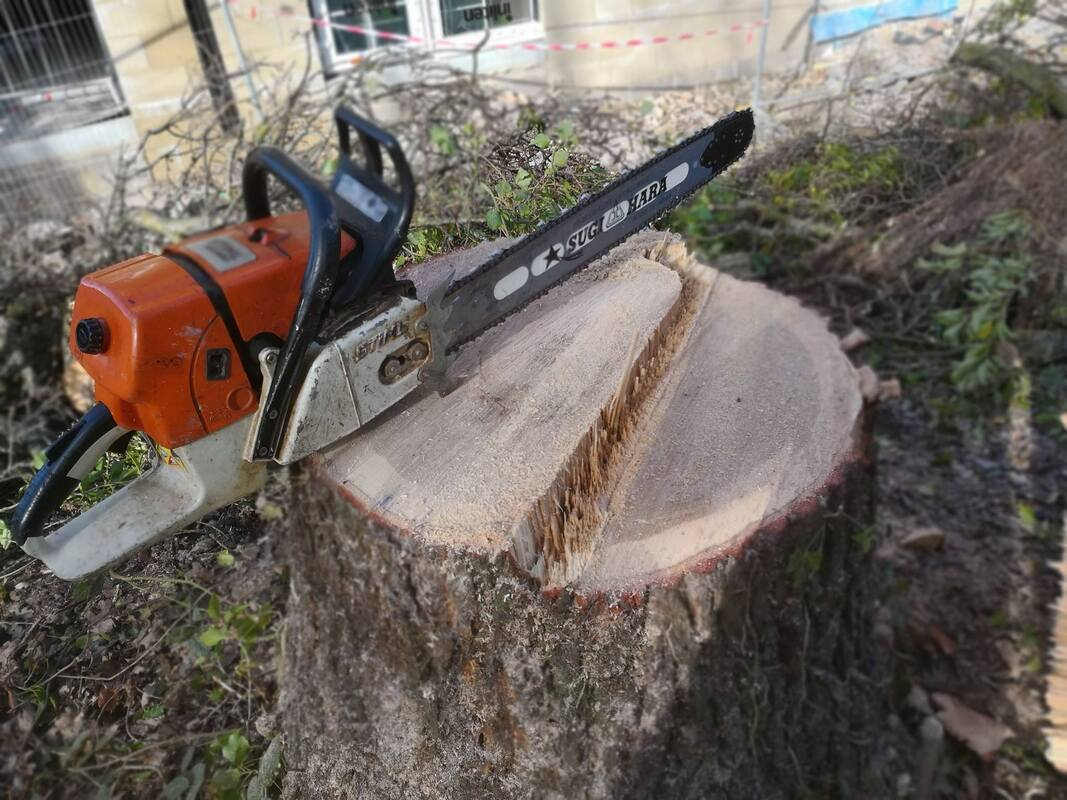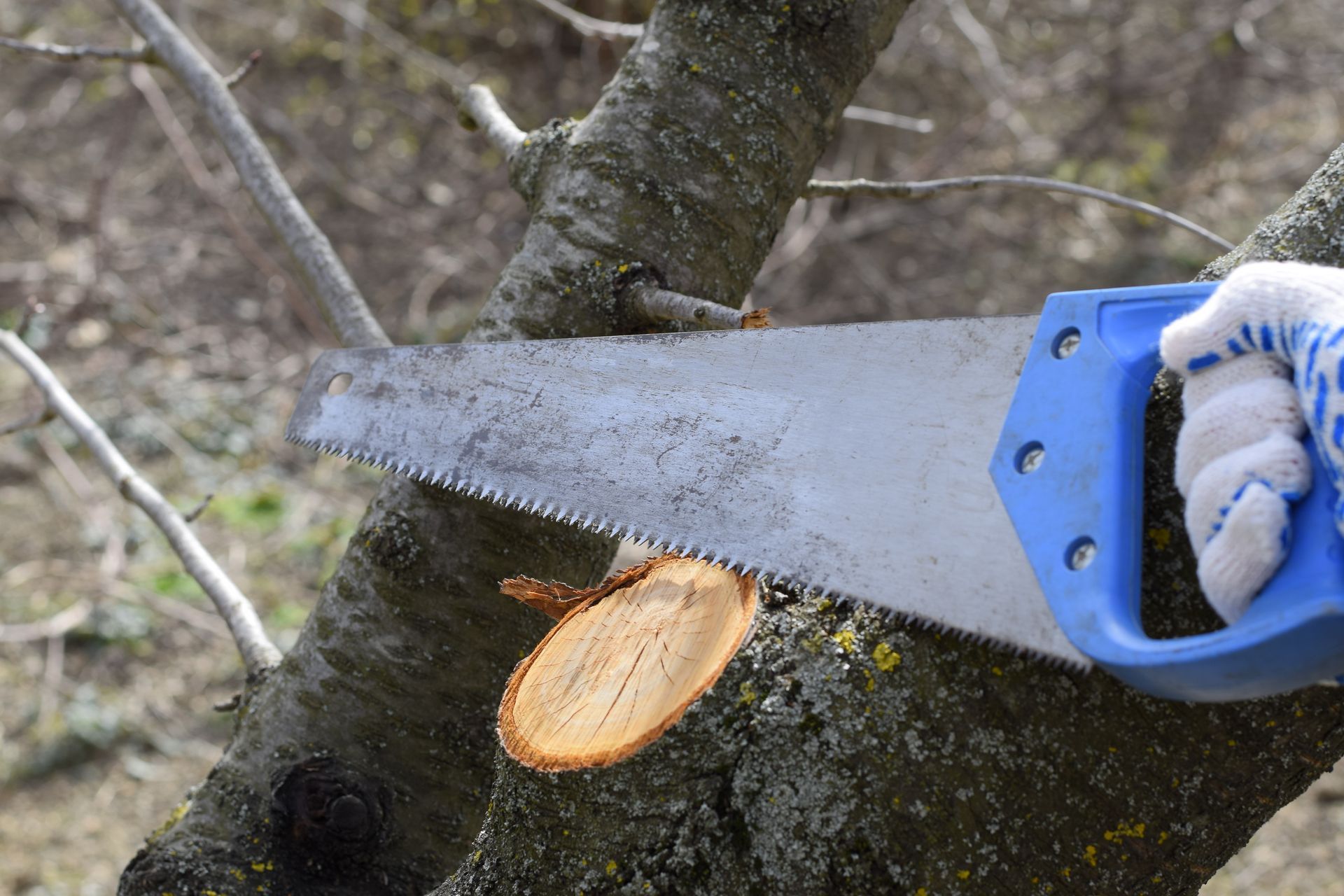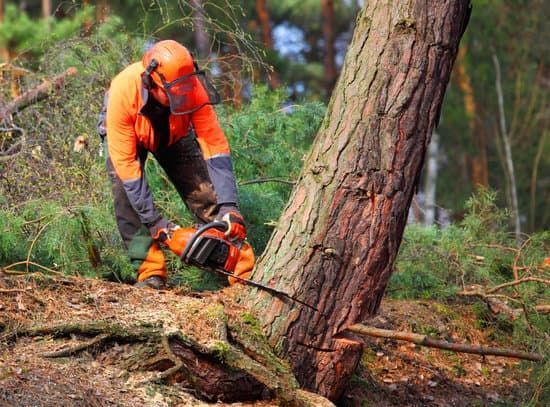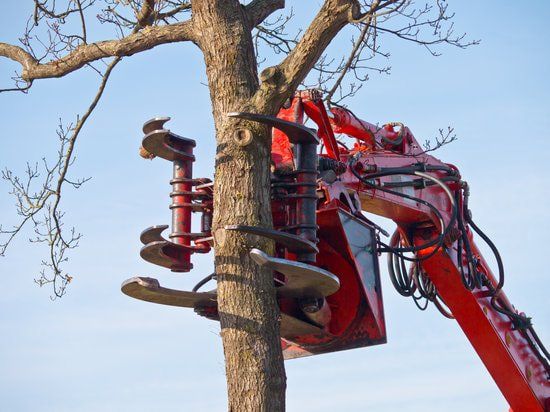Professional Tree Removal Services in Glasgow
Tree Removal Glasgow - Professional Tree Removal Solutions
At Glasgow Trees, we specialise in safe, efficient tree removal for residential and commercial properties across Glasgow. Our certified tree surgeons bring years of experience, ensuring each job is completed to the highest standards of safety and care.
Why Choose Us for Tree Removal in Glasgow?
Our Tree Removal Process

Assessment
We begin with a thorough evaluation of the tree and its surroundings.

Planning
Our team of skilled tree surgeons offers a wide range of services to keep your trees healthy

Execution
Using industry-leading equipment, we execute the removal with precision.

Clean-Up
We ensure your property is left clean and safe.
Areas We Serve
We proudly serve all areas of Glasgow, including all suburbs and surrounding towns and villages. Whether you need a single tree removed or large-scale services, we’re here to help.
Contact Us
Don’t wait until a damaged or diseased tree becomes a hazard. Contact us today for a free, no-obligation consultation. Let our experts provide you with the best tree removal service in Glasgow.
Tree Removal Service in Glasgow
Here at Glasgow trees we understand that tree removal can often be a difficult and long process. That is why we have created a service with enough knowledge and expertise to be able to handle tree removal in all of its various forms. We work with customers who need their trees removed for a variety of reasons and we always remain versatile and flexible enough to handle each one individually. So, keep on Reading to find out what we do and some of the processes that we normally follow. We are very much looking forward to hearing from you soon, and to providing a service that you won't be disappointed with.
Emergency Tree Removal - Available 24/7
When a tree becomes a threat to your safety or property, swift action is essential. Our Emergency Tree Removal Services in Glasgow are here to provide you with fast, reliable, and professional solutions when you need them most. Whether it's a tree that's been damaged by a storm, is leaning dangerously, or has unexpectedly fallen, our team of experts is equipped to handle the situation safely and efficiently. We understand the urgency of these situations, which is why we're available 24/7 to respond to your emergency tree removal needs, ensuring your peace of mind and the protection of your property.
Removing a Tree
Trees are the green Giants that sit on the land we live in. They have numerous qualities that increase our quality of life. They oxygenate the air, getting rid of carbon in our atmosphere and making sure that what we breathe remains healthy. They also look beautiful and improve the aesthetic comfort that surrounds us. Whether or not you are a nature lover, it is hard to ignore how helpful trees can be to the natural World. Therefore when they need removing, there are many things to consider. We will never remove a tree unless there are good reasons for it. Keep on reading to find out what they are.
Reasons for a Tree Removal - Why Remove a Tree?
One of the reasons why you might need a tree removing is because of where it is positioned. Here, we are talking about the roots of the tree and the branches. When the roots extend, particularly towards the foundations of a house, it can cause a big headache financially and in terms of security. Also, if you have branches that are encroaching onto different areas that are not within the clients ownership, the same problems can occur. Other reasons include aesthetic planning, cost effectiveness, and tree illness response.
Long Term and Short Term Tree Removal
When we operate tree services we do so on both a long-term and short-term basis. Tree removal can be done over time in a way that is prepared, particularly in cases where the natural world is at stake or where growth has become a major factor. However in some cases short-term, or even immediate, tree removal is the desired way forward. Here, we're talking about storm damage, and serious structural threats that are posed by a tree on your land. In both cases we have the team to respond and we are ready and able to give you what you need at any moment that you need it.
Large Tree Removal in Glasgow: Safe, Efficient, and Professional
Removing large trees requires specialised skills, equipment, and expertise to ensure the job is done safely and efficiently. At Glasgow Trees, we offer professional large tree removal services across Glasgow, whether you're dealing with a diseased tree, storm damage, or need to clear space for new development. Our experienced team of certified arborists uses advanced techniques and machinery to handle even the most challenging removals, ensuring minimal disruption to your property. For a detailed guide on the process and what to expect, read our comprehensive article on large tree removal here.
List of Services
-
Professional Tree RemovalList Item 1
Our team of professionals are always on hand to make sure that you get a service that is perfect. We will keep you in the loop at every stage of a tree removal process and we will even advise you on how to look after other trees that you have from that point forward. We have been doing this for long enough to know what works and what doesn't work, in terms of tree removal, and in terms of customer service as well. So, with us you can expect a great service delivered in a way that will leave a smile on your face at the end of the day. Get in touch as soon as you can and you will not be disappointed with the service that we deliver to you.
-
Why remove a tree in the first place?List Item 2
There are many signs that indicate your tree may be infected. The crown dieback, the deep cracks in its bark, misshapen or discoloured leaves and soft crumbly wood can all help you figure out what is going on with your tree. If other signs such as emergence holes emerge throughout the year along with feeding galleries from various unwanted pests.- Also heavy growth of things like fungi, then it's possible they have infested your tree too!
-
Professional tree assessments
When you look up to the tree, its branches are withered and dead. These broken limbs can cause serious injury if they fall for no reason at all on unsuspecting pedestrians below. If 50% or more of a tree is damaged in any way, whether by fire, lightning strike or windstorm then that part must be removed immediately because there is an even greater risk of death when these pieces come crashing down unexpectedly from above!
List of Services
-
Self-assessment for your treesList Item 1
It can be difficult to tell whether or not your tree is healthy if it doesn't look better than its neighbours. For a more accurate assessment, compare the health and vigour of your trees with other nearby trees that may also be dying for one reason or another. If the leaves on those other trees seem healthier than yours do, then there's an issue and it could be a good idea to call our experts to assess the situation and advise on a way forward.
-
Tree root assessmentsList Item 2
Evidence of a tree's roots can be difficult to see. However, as the soil heaves and fungi grow near its base it is clear there are root issues that need immediate attention.
-
Weak and unstable trees
Trees can become weak and unstable due to an internal decay. Branches that are dead or have cracks in them indicate the tree's weakness, but sometimes it takes a while for these signs of deterioration to show themselves on the outside as well. The effects of this kind of damage will vary depending on which way you're looking at it; if your neighbour has trees with multiple trunks (also called "leaders"), they may not notice any significant changes until later down the road, when structural issues arise because their structure isn't strong enough yet from being young.
-
Old and rotting trees
Some trees are just old and have been through so much that they're hollow. A tree with a third of its trunk rotted or hollow should be removed for safety reasons, because it's compromised beyond saving.
List of Services
-
Look out for Stressed trees & new growthList Item 1
You observe sprouts of new growth at the base of the tree. These shoots are known as epicormic and they indicate that this is a stressed out tree, who may need some TLC to rejuvenate.
This tree is a hazard to the electrical grid. It's growing into power lines and could potentially cause local blackouts in this area if it stays there for too long, so the best option is to have the tree professionally removed by an arborist tree surgeon company in Glasgow.
-
Hazardous treesList Item 2
Trees are a fundamental part of the environment, providing shade and shelter to animals as well as humans. But they can also be hazardous if they grow too close to roofs or other structures due to potential damage that could result from storms such as tornadoes. For example, large trees should at least maintain 20 feet distance away from houses or buildings for safety reasons and often it is necessary especially in areas with extreme weather conditions like hurricanes where there's an increased risk of tree limb failure because branches will snap off when strong winds hit them more forcefully than usual.
-
Tree removal & Felling alternative
Suspected trees don't always need to be felled and removed, such as if they are located in woodland areas or away from human life and man made structures. These trees can serve as home for all kinds of animal life like birds and other wildlife that would otherwise have nowhere else to call home. As mentioned before some tree failures happen very suddenly but most of them could've been prevented by proactive measures which is why it's a good idea now more than ever to check the trees on your property-before the worst of the UK weather and strong winds hits our shores.
Contact Us Today on
Signs That Indicate A Tree Needs To Be Removed
There are several telltale signs that a tree needs to be removed for safety or health reasons. If you notice extensive damage to the trunk, such as large cracks or missing bark, it may indicate internal decay. Another red flag is a tree that is leaning significantly, suggesting instability and a risk of falling. Additionally, trees that show signs of disease, like unusual leaf discolouration, fungi growth, or an infestation of pests, can also be candidates for removal. Proximity to structures is another critical factor; trees that have grown too close to homes or power lines may pose a risk of damage. Lastly, dead or dying trees, evidenced by brittle bark, lack of leaves, and rotting, should be assessed by a professional for possible removal to ensure safety and maintain the health of the surrounding vegetation.
Machinery and Equipment We Use For Tree Removal
At Glasgow Trees, we are equipped with an array of specialised tools and machinery designed to ensure a safe, efficient, and hassle-free tree removal process. Our well-trained staff use the following equipment:
- Chainsaws: For precision cutting, ensuring each cut is clean and causes minimal stress to the tree and surrounding environment.
- Stump Grinders: These allow us to fully extract the remains of the tree, leaving a clean slate for your future landscaping projects.
- Safety Gear: We prioritise the safety of our team and your property. Our crew wears industry-standard safety gear during the process.
- Aerial Lifts and Cranes: For tall, hard-to-reach trees, we use aerial lifts and cranes to safely access great heights while protecting your property.
- Rigging Equipment: Our professional rigging tools allow us to safely lower large branches and sections of the trunk, minimising the impact on your property.
These tools, combined with our expertise and attention to detail, ensure we provide you with the best tree removal service. Reach out to us today to schedule a consultation and let us assist you in achieving the landscape you envision.
Transform your outdoor spaces with our professional landscaping services. We design and maintain aesthetically pleasing, functional landscapes that reflect the quality and professionalism of your business or the cosiness of your home.
Tree Removal Cost
How much is tree removal in Glasgow?
Tree removal can typically costs in the region of £500 to £2,000 in Glasgow, but large and difficult trees can cost considerably more depending on the size and type of tree. If a tree is located on a property boundary or close to electrical wires, it may require specialised equipment or personnel, and thus cost more than usual. Additionally, if it's necessary for the stump to be removed, this can add an additional cost of up to £300. Tree removal can also be affected by the time of year and any local laws that may apply. For instance, if a tree is protected in a conservation area, you will need to get permission from your local council before it can be removed.
Affordable tree removal
Other factors such as ground stability, access issues, and the size and species of the tree can also affect the cost of removal. On average, it is possible to get a small- or medium-sized tree removed for £300 - £1,000. For larger trees, it may cost in the region of £8,000 £10,00 or more. It's important to contact several companies in order to get an accurate estimate so you know what you should expect to pay.
Professional tree removal company in Glasgow
Make sure the company you use is experienced and Insured like Glasgow Trees, and can provide references or testimonials from previous customers. Tree removal can be dangerous if not done correctly, so it is important to make sure you are in safe hands.
Other tree removal cost factors
In addition to the cost of tree removal itself, there may also be additional costs for clearing up the debris and disposing of it safely. This may include charges for skip hire, landfill fees, or stump grinding costs. It is important to take these additional costs into account when considering the total cost of tree removal.
Tree removal permit
Finally, some local authorities may require a tree removal permit if the tree being removed is protected by a Tree Preservation Order (TPO). If you are in this situation, it is important to check with your local authority before removing the tree. Depending on the size of the tree, additional permit costs may range from £50 - £200. You can read more about this subject in our article, Tree Removal Permits: Do You Need One?
Overall tree removal cost
Overall, the cost of tree removal in Glasgow can vary greatly depending on a number of factors such as the size of the tree and any additional services that may be required. Therefore, it is important to do your research ahead of time in order to get an accurate estimate for the job. Doing so can help you save both time and money on the project.
In conclusion, tree removal can be expensive due to factors such as height, width, degree of difficulty and the potential for damage to adjacent property. However, with careful research and planning, it is possible to find an experienced tree surgeon who can provide a quality service at an affordable rate. Utilising these tips can help ensure that your tree removal project runs as smoothly as possible.
DIY vs. Professional Tree Removal
Deciding between DIY efforts and hiring professional tree removal services is an intricate balance of assessing one's capabilities, understanding the risks involved, and recognising the complexity of the task at hand. While DIY tree removal might appeal as a cost-saving option for smaller, less hazardous projects, it requires a robust understanding of tree biology, proper safety protocols, and access to the necessary equipment. On the other hand, professional tree removal services bring a wealth of experience, specialized tools, and a comprehensive approach to safely managing the removal of trees, especially those posing significant risks or complexities. These professionals not only ensure the safety of individuals and property but also navigate the legal and environmental considerations involved, providing peace of mind that far outweighs the potential cost savings of a DIY approach.
Tree Removal Aftercare Advice
Proper tree removal aftercare is essential for maintaining a safe and healthy landscape. After removing a tree, steps such as clearing debris, preventing regrowth, and repairing the soil are necessary to ensure the area remains functional and visually appealing. Addressing potential issues like erosion, pest infestations, and water management can protect your property and promote new plant growth. Whether you're replanting or considering new landscaping options, following the right aftercare practices will help prevent long-term problems. For a detailed guide on tree removal aftercare, read our full article.
Ground Heave And Tree Removal
Ground heave, a phenomenon often associated with the removal of large trees, poses significant challenges to structural integrity and property maintenance. When trees are removed, the soil, previously compacted by tree roots, can expand and uplift as it rehydrates, leading to potential damage to nearby structures. This upward soil movement, or heave, is particularly concerning for foundations, potentially causing cracks and instability. Understanding the relationship between tree removal and ground heave is essential for homeowners and construction professionals to mitigate risks and safeguard property integrity. Glasgow trees take ground heave into account when considering tree removals on residential and commercial property in the Glasgow area. You can read more information about how to prevent ground heave when removing a tree by clicking the link.
Make sure to call Glasgow Trees, as we offer a free consultation and quote.
For Free Quotation and Expert Advice
Frequently Asked Questions About Tree Removal
Should I remove a tree myself?
No, it is not recommended to remove a tree yourself as it requires specialised equipment and knowledge of proper technique. Even if you have the necessary tools and know-how, attempting to remove a tree can lead to severe injury or property damage.
More importantly, removing a tree without proper experience and equipment may cause more harm than good. Improperly removing a tree can damage the surrounding landscape and cause further injury. Additionally, failing to correctly remove a tree may leave behind stumps that are difficult or even impossible to remove without professional assistance.
Therefore, it is best to hire a certified arborist or tree service company like Glasgow Trees that has the necessary experience in proper tree removal techniques. They have the training and expertise to complete the job safely and efficiently, with minimal damage to the surrounding landscape.
Ultimately, attempting to remove a tree without proper experience could lead to injury or property damage; it is best practice to hire an experienced professional for any tree removal project.
Additionally, tree removal services often include follow-up care such as stump grinding or debris removal. This can help to ensure that the area is cleared and safe, while also preserving the health of other trees in the vicinity.
For these reasons, most experts recommend against attempting tree removal on your own. Hiring a certified arborist or tree service company is the best way to properly and services such as stump grinding and mulching. This ensures that no part of the tree remains on the property, eliminating any potential safety hazards or problems with future landscaping efforts.
How do professional tree surgeons remove a tree?
Overall, removing a tree requires a combination of our skills, knowledge, and experience to do it safely and effectively. It is important for home- or land-owners to consult with our professionals when undertaking any tree removal project as these steps can help ensure that plants and nearby trees as well as other structures such as buildings remain safe and secure throughout the process. Additionally, proper disposal of debris is critical for maintaining environmental health. Taking all these precautions not only protects people from harm but also helps preserve the lushness of forests and other green spaces around us.
When it comes to tree removal, our professional tree surgeons in Glasgow typically proceed in the following steps:
1. Assessing the Situation: Professionals will first assess the situation and determine how best to safely remove the tree from the property. This includes surveying for any nearby structures or utility lines that could be impacted during the process.
2. Chopping and Cutting Branches: A chain saw is used to cut down larger branches, while loppers are used for smaller ones.
3. Taking Down Trunks: Once all of the branches have been removed, a crane is then used to lift and pull out trunks from their roots in one piece if possible.
4. Cleaning Up Debris: After removing the tree from the property, professionals will clean up any debris that was left behind. This includes cutting and grinding stumps as well as hauling away wood chips or logs.
5. Planting Replacement Trees: Professionals may also be able to help with planting replacement trees if desired. The type of tree planted depends on the location and soil conditions of the area being replanted.
By following these steps, our team can properly remove a tree from a property in a safe manner. It is important to remember that it is best to hire an experienced arborist like Glasgow Trees for this job in order to ensure safety and minimise risk of injury or damage to property. Additionally, it is often beneficial for homeowners to check with their local municipality to determine any regulations or requirements when it comes to tree removal. Following these steps can help make the process go more smoothly and efficiently. With our professional tree surgeons and arborists on the job, homeowners can rest assured knowing that their trees are being taken care of with care and expertise.
Is removing old trees good?
Before removing an old tree, it is essential to consider all factors involved. There are many potential benefits associated with keeping an older tree in place, including preserving biodiversity, providing aesthetic appeal, and improving air quality. On the other hand, the removal of an old tree can result in soil erosion, the spread of invasive species, and the loss of wildlife habitat.
It is important to consider both the positive and negative impacts before deciding whether or not to remove an old tree. Each situation should be assessed on a case-by-case basis. With careful planning and consideration, removing an old tree can be beneficial to the environment if it is done thoughtfully and with consideration of all potential impacts. Ultimately, when deciding whether or not to remove a large, old tree, it is important to consider the impact this will have on your local ecosystem.
It is also important to assess any potential alternatives that could help keep the tree in place. For example, if the tree is in danger of toppling due to diseased or weakened roots, then pruning could potentially help save it. If you decide that removing the old tree is necessary and beneficial, there are a few things to keep in mind. First, you should have an arborist inspect the tree before removal and make sure that it is not a protected species. You should also plan to replant new trees in the area and tend to them properly so that they can serve as replacements for the old tree.
Finally, you should consider ways to use the wood from the old tree in order to minimise waste. All of these factors need to be taken into consideration when deciding whether to remove an old tree. Ultimately, the decision will depend on the specific circumstances, but if done carefully and with respect for the environment it can be beneficial to remove old trees and replace them with new ones.
Do I need permission to cut down a tree in my garden?
By taking the necessary precautions before cutting down a tree, you can prevent any unnecessary damage or fines. Taking the time to research and understand applicable laws will help ensure that you are acting responsibly and protecting all trees in your care.
Additionally, if you intend to use the tree for any kind of construction or landscaping project, it may be necessary to obtain a permit from an appropriate body. This is especially important if the tree is located in an area protected by conservation laws.
Finally, it is always worth considering alternative solutions before deciding to cut down a tree. Pruning branches and trimming lower-hanging branches are both excellent ways to keep your tree healthy and attractive without having to resort to more drastic measures.
In summary, it is important to research local laws and consider alternative solutions before cutting down a tree in your garden. If you do decide that removing the tree is necessary, make sure you have all of the required permissions from the local authorities before commencing any work.
There are also other considerations when it comes to tree removal; for instance, hiring a professional arborist or tree surgeon is often recommended for larger trees that may have complex root systems and require specialist equipment for safe removal. Additionally, if you do intend to replant a tree in place of the one being removed, consider the type of tree that would best suit your garden. A species native to your region is often recommended as this will be well-suited to local climate and soil conditions.
Ultimately, although it may seem like a straightforward process, cutting down a tree in your garden involves more than just taking a saw to it – so make sure you research your local regulations and requirements as well as enlist professional help to ensure the job is done safely and responsibly. Furthermore, do not forget to consider options such as pruning or trimming instead - this could be a better solution if you are simply looking to alter its size or shape. In some cases, it might even be possible to transplant the tree, providing you and your property with the benefits of a beautiful natural feature for many years to come.
Will the council get rid of a tree?
The decision of whether or not to remove a tree will depend on a variety of factors. The council may choose to remove a tree if it is determined that the tree poses a risk to public safety or property, is diseased or dead, interferes with development plans, causes undue financial burden in terms of maintenance and upkeep, or is causing an obstruction. In order to make this decision, the council will take into account a range of considerations, including the tree's age and condition, its size and location, as well as any potential benefits that it may provide.
Once all relevant information is considered, the council will then decide whether or not to remove the tree in question. In some cases, the removal of the tree may be necessary for safety reasons, but in other cases, it may be recommended to provide further protection to a certain area. In either case, any decision made by the council should adhere to local regulations and take into account public opinion before being finalised. If removal is deemed necessary, the council will ensure that all appropriate measures are taken to minimise any potential disruption or damage.
The tree may be removed in a number of ways depending on its size, with the most common being manual and mechanical methods. In some cases, trees may also be removed by chemical means such as herbicide application. The council takes great care to select the most suitable method for any particular tree, and will always consider the safety of people, property, and wildlife in its decision-making process. Ultimately, the goal of any tree removal is to provide a safe environment while minimising aesthetic disruption. It's important to remember that removing a tree is not always necessary or the best option. The council will take into account the tree's age, species, and condition as well as its location when deciding whether or not to remove it. If a tree is structurally sound, healthy, and mature enough to provide meaningful environmental benefits such as providing shade, filtering air pollution, or hosting wildlife habitats – then removal should be avoided wherever possible.
If the tree is a hazard or has been damaged beyond repair, then removal may be the only option. In these cases, the council will work with other departments to ensure careful consideration is given to replacement planting and other related environmental protection measures. By making sure all options are considered before opting for tree removal, the council can ensure that any decision they make is in the best interests of the community, both now and in the future.
What time of year is cheapest for tree removal?
The cost of tree removal varies throughout the year. Generally, the best time to remove a tree in the UK is from late autumn to winter. During this period, trees are dormant and there will be fewer leaves and branches on them, making it easier for workers to access their trunks and roots. This means that less time is needed for the job and thus the cost is lower. Tree removal companies may also offer discounts during this time as they will not have to compete with other companies for business. Additionally, some tree species are known to be more hazardous in winter, meaning that it will be safer and more economical to get the job done during these months. Ultimately, the best time of year for tree removal in the UK is from late autumn to winter.
You should also keep in mind that although this period may be cheaper for tree removal, it can also be riskier for workers due to the weather conditions and other hazards such as slippery surfaces and fallen debris. Therefore, it is important to select a reputable tree removal company like Glasgow Trees who have the experience in these types of jobs and the necessary safety protocols in place. Additionally, make sure that you get multiple quotes from different companies to ensure you are getting the best price for the service.
By following these tips, you can be confident that you are getting the most out of your tree removal costs while ensuring a safe and successful job. Additionally, if you are looking for options other than tree removal, such as trimming or pruning, then bear in mind that these types of services usually cost less and may be the better option depending on what you need.
Here are some examples of tree removals that we have completed in Glasgow
Example 1: Emergency Tree Removal in Shawlands, Glasgow G41
A recent storm caused significant damage to an old oak tree in a residential garden in Shawlands, G41. The tree had begun to lean dangerously towards the homeowner's property, threatening both the house and a neighbouring fence. Our team was called out immediately, and within hours, we assessed the situation and safely removed the tree using a crane to avoid any further risk. The homeowner was relieved to have the hazard removed so quickly, and we ensured that the site was fully cleared and safe.
Example 2: Fallen Tree in Bearsden, Glasgow G61
In Bearsden, G61, a large sycamore tree unexpectedly fell across a driveway after its roots were weakened by heavy rain. The tree blocked access to the homeowner’s garage and posed a risk to nearby power lines. Our emergency response team arrived on-site within the hour, carefully sectioning the tree and clearing the driveway. The removal was completed swiftly, allowing the homeowner to regain access to their property and avoid potential power disruptions.
Example 3: Dangerous Ash Tree in Rutherglen, Glasgow G73
A homeowner in Rutherglen, G73, noticed that a large ash tree in their front garden had developed a significant split in its trunk after a particularly windy night. Concerned about the safety of their family and neighbours, they contacted us for an urgent removal. Our arborists conducted a thorough assessment and determined that the tree was at high risk of falling. We proceeded with a controlled removal, ensuring that the nearby homes and gardens were protected throughout the process. The homeowner was grateful for our prompt and professional service.
Example 4: Diseased Tree Removal in Pollokshields, Glasgow G41
In Pollokshields, G41, a homeowner contacted us after discovering that a large beech tree in their garden was suffering from advanced decay and was showing signs of disease. The tree was located close to a main road, and the homeowner was worried about the risk it posed to passing vehicles and pedestrians. Our team quickly assessed the situation and confirmed that the tree needed to be removed immediately to prevent any potential accidents. We safely dismantled the tree and removed the stump, leaving the site clear and ready for replanting.
Example 5: Storm Damage in Milngavie, Glasgow G62
Following a severe winter storm, a mature pine tree in Milngavie, G62, was uprooted and partially collapsed onto a nearby shed. The tree’s precarious position posed an immediate threat to the shed and the surrounding garden. Our emergency team responded promptly, carefully removing the tree without causing any additional damage. The homeowner appreciated our quick response, particularly in such challenging weather conditions, and was pleased with the thorough cleanup of the site.
These examples illustrate the variety of emergency tree removal situations we’ve handled across different areas of Glasgow, each one requiring a tailored approach to ensure safety and minimise disruption.
Call To Arrange A Free Tree Removal Consultation And Quote
Trees are an essential part of our environment, providing us with oxygen, shade, and natural beauty. However, there are times when trees need to be removed for various reasons such as safety concerns or property maintenance. In such cases, hiring a professional tree removal service is crucial.
Our team of experts at Glasgow Trees has extensive knowledge and experience in handling all types of tree removals. We understand the complexity and risks involved in removing trees, which is why we follow industry best practices and safety guidelines to ensure a smooth and secure process.
Whether you need a tree removed due to storm damage, disease, or simply because it's obstructing your view, our services are tailored to meet your specific needs. We use specialised equipment and techniques that allow us to remove trees without causing damage to your property or the surrounding area. Call Now to Book A FREE Quote
You Can Call Us On:
Glasgow Trees, keeping it local.
Some of the areas listed below that we offer our tree removal services in the Glasgow area:
Tree Removal Glasgow City, Lanarkshire - Tree Removal West End - Tree Removal Renfrew - Tree Removal Dunbarton - Tree Removal - Tree Removal Ayr - Tree Removal Bridgeton - Tree Removal Bearsden - Tree Removal Bishopbriggs - Tree Removal Bellshill - Tree Removal Cambuslang - Tree Removal Hillhead - Tree Removal Hyndland - Tree Removal Shawlands - Tree Removal Giffnock - Tree Removal Fintry - Tree Removal Balfron - Tree Removal Kippen - Tree Removal BuchLyvie - Tree Removal Kilsyth - Tree Removal Croftamie - Tree Removal Scotstoun - Tree Removal Clarkston - Tree Removal Coatbridge - Tree Removal Rutherglen - Tree Removal Milngavie - Tree Removal Barrhead - Tree Removal Bothwell - Tree Removal Hamilton - Tree Removal Clydebank - Tree Removal Jordanhill - Tree Removal Johnstone - Tree Removal East Kilbride - Tree Removal Pollokshields - Tree Removal Neilston - Tree Removal Stepps - Tree Removal Newton Mearns - Tree Removal Strathaven - Tree Removal Uddingston - Tree Removal Strathblane - Tree Removal Loch Lomond - Tree Removal Partick - Tree Removal Kelvinside - Tree Removal Lanark - Tree Removal Stirling - Tree Removal Falkirk - Tree Removal Cumbernauld - Tree Removal Bishopbriggs - Tree Removal Kirkintilloch - Tree Removal Lennoxtown - Tree Removal Killearn - Tree Removal Drymen - Tree Removal Milton of Campsie - Tree Removal Balloch - Tree Removal Loch Lomond
Still have questions?
If you have more questions or need further assistance, feel free to reach out to us. We're here to help!






